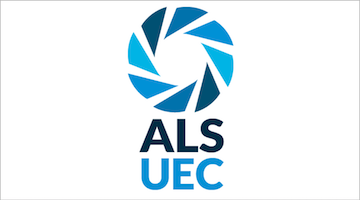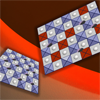- 7 Imaging Tools Pushing Science Forward
- Finding Diamonds in the Rough
- CRISPR Pioneers Runners Up for Time Magazine’s Person of the Year
- Nanogeometry
- Glowing Crystals Can Detect, Cleanse Contaminated Drinking Water
- Scientists Trace ‘Poisoning’ in Chemical Reactions to the Atomic Scale
- X-Rays Capture Unprecedented Images of Photosynthesis in Action
- Five Berkeley Lab Scientists Named AAAS Fellows
- 3-D Imaging Technique Maps Migration of DNA-carrying Material at the Center of Cells
- Molecular structure in Zika virus leads to potentially disease-causing RNAs
- Solar Cells Get Boost with Integration of Water-Splitting Catalyst onto Semiconductor
- Berkeley Lab Takes Home Five R&D 100 Awards for Environmental, Battery, and X-ray Technologies
- Lehigh scientists fabricate a new class of crystalline solid
- Miquel Salmeron Wins 2016 Berkeley Lab Prize — Lifetime Achievement Award
ALS in the News (Oct 2016)
- Transformational X-ray Project Takes a Step Forward
- Crystal Clear Imaging: Infrared Brings to Light Nanoscale Molecular Arrangement
- Energy Focus: Electric Fields Help Oxygen Slip through the Cracks for Ultralow Power Electronics
- Peering Into Batteries: X-Rays Reveal Lithium-Ion’s Mysteries
- HyMARC Designated As an Approved Program at the Advanced Light Source
- UC Berkeley, UCLA, CU Boulder Scientists Collaborate to Improve Real-Time Functional Imaging
- Peter Nico Announced as Program Domain Lead for Sustainable Energy Systems
- Scientists Find Twisting 3-D Raceway for Electrons in Nanoscale Crystal Slices
- ALS/Molecular Foundry SLAM #NPAW2016
- A Conscious Coupling of Magnetic and Electric Materials
- Scientists Find New Way to Manipulate Size of Virus-Like Particles
- Molecular Foundry Established as Its Own Division
ALS Spectrum
Begun in 2007, ALS Spectrum is a publication that encapsulates the same type of information contained in the ALS Activity Report but in a short, readable, newsletter-like format. Featured scientific and facility developments are front-paged, and a roundup of science highlights is provided in easily browsable summaries with Web links. Contents also include brief reportsRead More Read more »
Spoiler styles
This is a spoiler header This is spoiler content Read more »
ALS in the News (Sep 2016)
- Teams of Scientists Gather at Berkeley Lab to Study Secrets of Plants’ Plumbing
- Berkeley Lab Hosts UK Scientific Technology Facilities Council
- Researchers Peel Back Another Layer of Chemistry with ‘Tender’ X-rays
- Calcium channel blockers caught in the act at atomic level
- A New Way to Display the 3-D Structure of Molecules
- 2016 R&D 100 Awards – Berkeley Lab Finalists
- Fadley is Honorary Member of International Scientific Committee
- Energy Department to Invest $16 Million in Computer Design of Materials
ALS Users’ Executive Committee Update
The ALS UEC met last week to discuss the upcoming User Meeting, solicitation of new UEC members, and the pending update for the ALS UEC website. Read more »
ALSNews Vol. 376
what is in this table? New A Surface Treatment for Improving Fuel-Cell Cathodes Solid-oxide fuel cells (SOFCs) are a promising path toward the “clean” conversion of chemical energy to electrical energy with little or no carbon dioxide emission. With the help of the ALS, researchers from MIT recently found a way to treat SOFCRead More Read more »
Around the ALS in Photos: Plant-a-thon!
To resolve open questions about plant plumbing–how plants transport water from roots through stems and how they respond to stresses such as drought–science teams from around the world met September 1-3 at the ALS for an intensive round of x-ray and other experiments. See photos of the event in our photo essay. Read more »
ALS in the News (Sep 2016)
- Teams of Scientists Gather at Berkeley Lab to Study Secrets of Plants’ Plumbing
- Berkeley Lab Hosts UK Scientific Technology Facilities Council
- Researchers Peel Back Another Layer of Chemistry with ‘Tender’ X-rays
- Calcium channel blockers caught in the act at atomic level
- A New Way to Display the 3-D Structure of Molecules
- 2016 R&D 100 Awards – Berkeley Lab Finalists
- Fadley is Honorary Member of International Scientific Committee
- Energy Department to Invest $16 Million in Computer Design of Materials
ALSNews Vol. 375
ALSNews Monthly Newsletter of the Advanced Light Source, Lawrence Berkeley National Laboratory New Catalyst Boosts Selective Formation of Olefins from Syngas Experiments at the ALS have helped to explain how a new catalyst significantly boosts the selective formation of light olefin molecules—important building blocks in the petrochemical industry—from syngas. The new process could allow forRead More Read more »
- « Previous Page
- 1
- …
- 10
- 11
- 12
- 13
- 14
- …
- 23
- Next Page »



